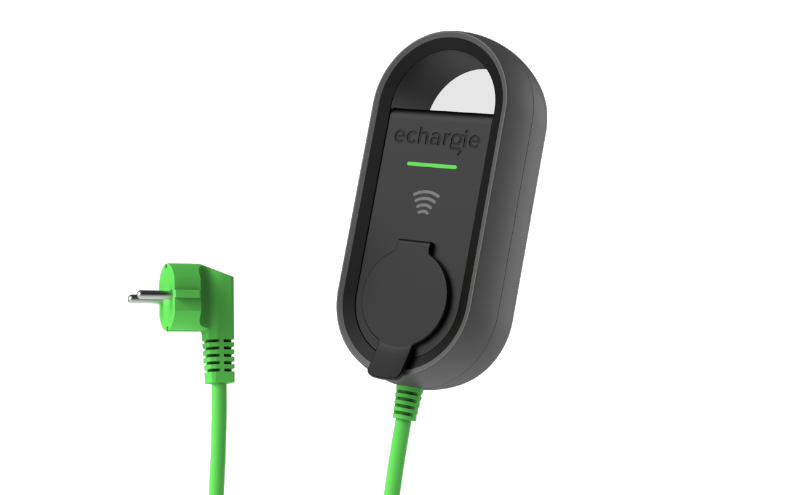
Imagine having a petrol pump in front of every parked car. Doesn’t sound possible, does it? Now, imagine that the car is electric, and the energy source is a standard power socket. Since a car is parked about 95% of the time, why not make that downtime productive?
Electric vehicles (EVs) are only starting to be seen on Finnish roads, but their number is expected to increase sharply. Forecasts show global demand for EVs growing from 3 million to 125 million by 2030. The charging infrastructure needs to be developed rapidly, but it would require big investments. What if we could upgrade already existing infrastructure into convenient charging stations for EVs? And what if facility owners could be paid for the electricity used? Welcome the eChargie service platform. Economical, sustainable and easy eChargie – a service for everyone
eChargie, the Airbnb of electric charging, enables anyone to convert their public or semi-public electric socket into an EV charging station by installing a simple device. Most installations require just a screwdriver – no electrician needed – as the eChargie unit simply plugs into a standard electric socket. EV drivers plug the charger cable into the eChargie unit and activate the charging through a smartphone app. The owner of the parking space then collects a fee for making electricity available.
eChargie is developed by CationOy. Based in Tampere, the start-up has greatly benefitted from smart-phone pioneers in product design, connectivity, IoT and related technology. “If you want to develop a compact, intelligent, connected solution, Tampere is a great place to find expert companies to partner with,” says Oliver Hussey, CMO of Cation.
Treon contributed their vast expertise in hardware design and AJR Solutions in developing the mobile app and cloud solution. Both companies were born from the Microsoft Mobile R&D site closure two years ago.
“Bringing Cation’s vision alive into a functional prototype has been a great ride. It’s such an exciting product. eChargie is basically a smart connected electricity meter for any schuko socket built with the latest IoT-technologies”, notes Janne Julkunen, Chief Product Officer of Treon.
“eChargie is an industrial internet project at its best,” adds Janne Koskinen, CTO of AJR. “It was fascinating to see how wireless devices can be connected to the Azure IoT Hub and controlled via mobile applications. Customers don’t actually manage the eChargie device with the mobile app, they interact with the cloud application which runs the device.”
As Katja Koponen, CEO of Cation, points out, “eChargie benefits society. If consumers find EVs to be a convenient alternative, we would need less fossil fuels, thus lowering greenhouse gas emissions.”
All three partners have received support from Business Finland (Tekes) and continue to grow. It’s a clear example of how Business Finland supports innovation and helps create jobs in the region.
